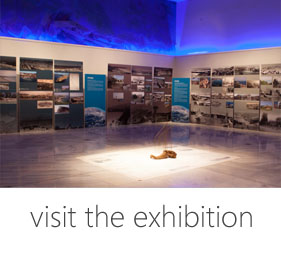Name
Anastasioupolis - PeritheorionCurrent Name
Ancient Name
AnastasioupolisMedieval Name
Peritheorion. Ottoman name: Buru kale.History of the name
The name Anastasioupolis is firstly found in Prokopios and is accredited to the founder of the city Anastasios I (491-518). It was renamed to Perithorion in 1341 by Andronikos Palaiologos III. During the Turkish rule the city is named “Fortress of Buru” (Buru Kale), coming from the Turkish name of the lake Vistonida(Buru).
Place :
Country
GreeceGeopolitical Unit
ThraceAdministrative subdivision
Prefecture of Rodopi, Municipality of Iasmos.Location
The remains of the byzantine city are being preserved in the current village of Iasmos and the southern part of the village Amaxades between Xanthi and Komotini.Foudation Date
According to the written sources, Anastasioupolis was founded in 495 AD by Anastasios I.Current condition
The city nowadays is open for visitors as an archaeological site which is covered with rich greenery.History
Anastasios I founded the city at the end of the 5th century AD replacing the roman station of Via Egnatia in the area, which is mentioned in the roman treks as Stabulum Diomides. The name refers to the mythical stables of Diomides, which according to tradition are placed in the extended Vistonida lake area.
Anastasioupolis continues to be an important station of Via Egnatia, as well as an important harbor of the Aegean during the byzantine times as well. In 562 AD the city is taken over by the Unns. From the 7th to the 12th century it is cited only as a diocese pertaining to the Traianoupolis metropolis.
In the beginning of the 14th century in the area of Anastasioupolis, a historically significant battle took place between the two conflicting teams of the Catalan Society and ended with its final demise.
According to Kantakouzenos narrations, Andronikos Palaiologos III, found the city of Anastasioupolis destroyed, he partly restored it and renamed it Peritheorion in 1341. We don’t have any information on how and when it was destroyed.
The name Peritheorion was known in the area because it referred to a nearby city, which according to Akropolites was destroyed in 1205-06 by the Bulgarian Czar Ioannitzis (Kallogiannis or Skylogiannis).
Description
From the byzantine city, the towers which reinforced the enclosure to all its perimeter are being preserved. Part of the city’s aqueduct is being preserved, as well. It was constructed by Justinian I (527-565). In the extended area there are fragments of daily used ceramics dated from the roman to byzantine eras.
Harbor
Nowadays, because of the aggradations from the nearby river, the position where Anastasioupolis - Peritheorion used to be, moved away from the Vistonida lagoon which used to be the connection of the city to the Aegean.
According to Prokopios, the port of Anastasioupolis was not fortified until the time of Justinian, and that was why the Unns kept taking over the ships and looting the islands of the Northern Aegean. So, the emperor fortified the beach as well so as to save the islands from these invasions.
Fortification
The floor plan of the forting enclosure is an abstract trapeze with its largest parallel side towards the South. At seldom spaces it is reinforced with four-sided and cylindrical towers. The towers are almost entirely preserved, while the smaller towers are half destroyed because of their weak foundations in sedimentary ground. Initials of the Palaiologoi are placed on the surfaces of the towers and reassure the extended restoration of the walls by Andronikos, as mentioned by Kantakouzenos. On the South side of the enclosure there is the central gate which led to the port. It opens between two strong towers which are connected to each other by a stone arch.
Medieval Sites
Anastasioupolis – Peritheorion is an archaeological site open for visitors.
Textual Sources
• Ακροπολίτης, Georgii Acropolitae Opera, Augustus Heisenberg I-II, Leipzig 1903, σ. 23.
• Καντακουζηνός IV, Ι 542.10, II 197.10, ΙΙ 431.
• Προκόπιος, Περί κτισμάτων, IV.11.2 , IV.11.11
Bibliography
• Asdracha C., La region des Rhodopes aux XIIIe et XIVe siecles. Etude de geographie historique, Αθήνα 1976,σ. 98-104.
• Ζήκος Ν., Βυζαντινό οδοιπορικό στη Θράκη, Αρχαιολογία 13 (1984), σ. 73.
• Κυριακίδης Στ., Θρακικά ταξείδια. Μπουρού-Καλέ - Αναστασιούπολις - Περιθεώριον, Ημερολόγιον Μεγάλης Ελλάδας 1931, 1931.
• Μπακιρτζης Χ., Βυζαντινή Θράκη, Θράκη, Γενική Γραμματεία Περιφέρειας Ανατ. Μακεδονίας – Θράκης, 1994, σ. 157, 162 – 164.
• Τσουρής Κ., "Νεάπολις- Χριστούπολις-Καβάλα: διορθώσεις-προσθήκες-παρατηρήσεις στην οχύρωση και την ύδρευση", ΑΔ 53, Μελέτες, Αθήνα 1998, σ. 442
Links
http://odysseus.culture.gr/h/3/gh351.jsp?obj_id=2554
http://www.xanthi.ilsp.gr/cultureportalweb/print.php?article_id=818&lang=gr&print_mode=article
Visual Material
(plans, maps, photos etc from the city and the harbor)

















